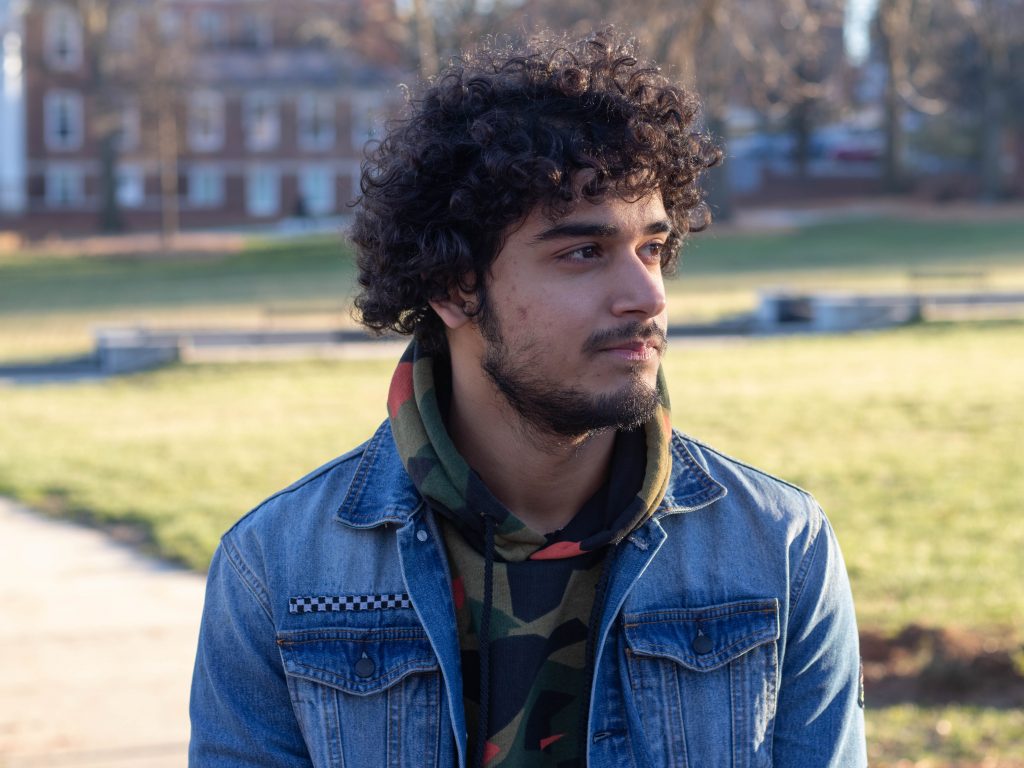Less than 40 international undergraduate and graduate students from Pakistan were enrolled at the University of Maryland in Fall 2022, according to this university’s International Student Enrollment Statistics. When combined with the other 1,686 international students from South Asia, students from Pakistan, India, Nepal, Sri Lanka and Bangladesh made up just more than four percent of this university’s undergraduate and graduate student population.
For Ubaid Bakhtiar, a first year electrical and computer engineering doctoral student from Lahore, Pakistan, having this small community on campus means feeling unwelcome in friend groups beyond the South Asian student population.
Bakhtiar believes his accent creates the illusion of a language gap, which makes expanding his friend circle difficult.
“I never wanted to be in a clique of Pakistani students, but I’m forced to do so because if I would not stay in the Pakistani group, then I [would] have no friends,” he explained. “No one here is that receptive about making friends with people from Pakistan.”
Compared to the weekends he spent watching movies and eating pizza with friends or staying busy with his family doing household chores in Pakistan, the weekend has become duller when spent alone. Boredom quickly seeps into overthinking and ultimately, sadness takes over.
Bakhtiar talked to his family every day during the fall semester to curb the mental strain of struggling to find a community. But this reliance on familial support is nothing new to Bakhtiar or traditional Pakistani family relations.
[Mental health stories beyond UMD: International students discuss mental health experiences]
Family collectivism is strong in Pakistan as multigenerational households work together to combat the financial strain of large-scale political instability, including by living under one roof, according to Murad Khan, a professor of psychiatry at the Aga Khan University in Pakistan. However, the lack of education and accessibility to resources available in major cities means most rural households try to keep mental health conversations within the family.
Although Bakhtiar’s parents welcome discussions about mental health, he’s reluctant to initiate conversations to avoid burdening them. Living amid socioeconomic and political challenges that threaten residents’ physical health, the concept of mental health in Pakistan is usually sidelined.
No prime minister in Pakistan has completed their five-year term since the country’s independence from India in 1947.
The military, in particular, has influenced Pakistan’s highest judiciary and ousted multiple ministers from both the center-right Pakistan Muslim League and center-left Pakistan Peoples Party, according to Husain Haqqani, Pakistan’s former ambassador to the U.S.
This interference has left numerous systems, including education, housing and health care, with a blank slate as prime ministers seek to establish new systems rather than build upon the progress of their predecessors.
Pakistan’s mental health resources have been “completely overlooked,” Khan said, with only about one percent of the annual budget allocated to health resources with no separate budget for mental health. That small amount is then subject to mismanagement, poor governance and corruption, he added.
Piling on religious extremism at the hands of the Taliban and other religious extremist groups, as well as the high prevalence of disease and infant mortality, threats to health and safety seem to come from every direction. With about 65 percent of the population residing in rural communities, these dangers also pose a risk to keeping land ownership — an economic asset — within the family.
Families, in turn, elect to stay together as a protective measure, contributing to a single family income as opposed to dispersing and trying to financially make it on their own.
[Students in South Korea begin to value self-care amid academic pressures]
Although family collectivism bears financial benefits, it also leads to collective decision-making about marriage, large investments and mental health. For young Pakistani women, this can mean either an arranged marriage or inter-family marriage, which ensures land ownership remains in the family, Khan added.
Young women may show signs of a psychotic or depressive breakdown if they don’t want to marry the partner their families chose. Often a family tries to contain this behavior, leading the young woman to escalate the situation to a point where the family would seek outside help.
Other young adults in rural communities — where low literacy rates and distance to health services prevent awareness of and access to support — turn to smoking, substance abuse and violence to cope with obstacles challenging their mental health.
“The level of violence in the Pakistani society is incredible,” Khan noted. “[It] self perpetuates itself within the society, and a lot of these people are actually suffering … They don’t have clinical syndrome of a mental health condition, but certainly compromised mental health.”
Older generations retreat to religion for protection from depression, but without proper health networks and internal pressure to contain mental illness within a family, most Pakistani people don’t access a psychiatrist for treatment until four and a half years after developing depressive symptoms, according to Khan.
Nevertheless, where internet connection can be reached, exposure to western film and social media is changing how taboo topics such as mental health are discussed among younger generations.
“It’s becoming a sensitive topic in the west,” Bakhtiar said. “Because of that fact, it is also becoming a sensitive topic in Pakistan.”



